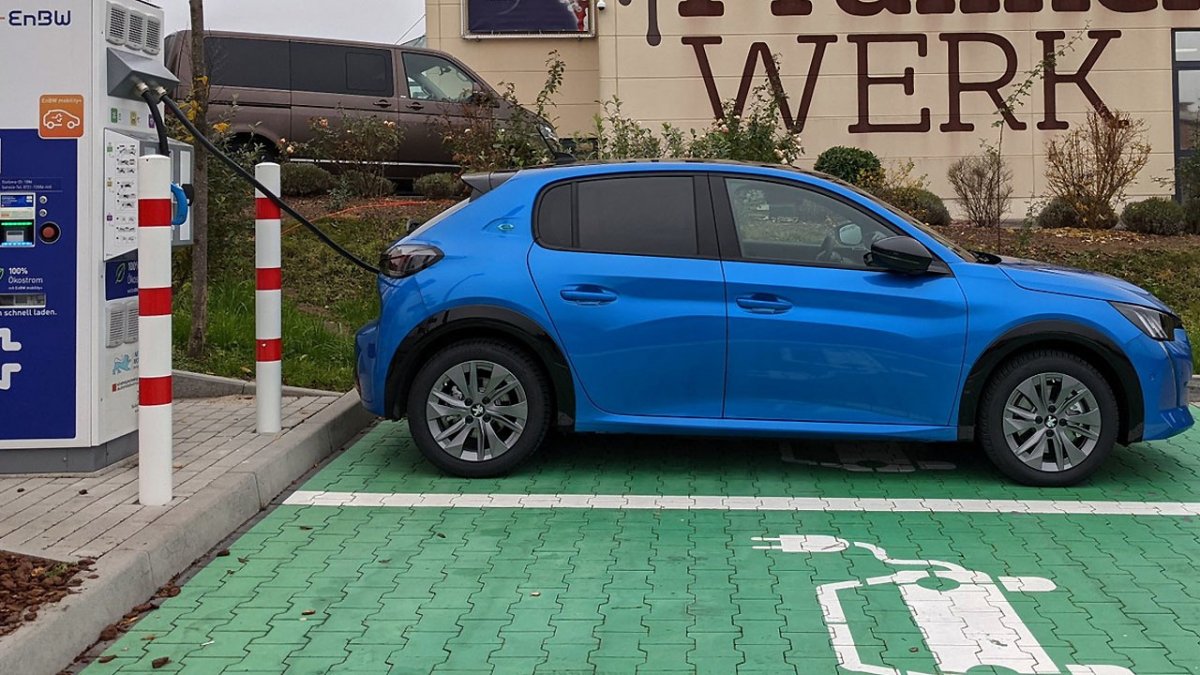Peugeot's e-208 electric car in the test: a bulk buyer in frosty conditions
Source: Heise.de added 17th Dec 2020PSA’s electric platform e-CMP has already made friends in the Opel Corsa-e and is found in the Peugeot e – 208 a particularly chic, playful expression. The key data looks really good: Battery with 50 kWh gross ( 46 kWh net), DC charging up to 100 kW and AC charge up to 10 kW three-phase – the latter is standard in the Peugeot, different than in the Corsa-e. In practice, this works sufficiently well if the platform is also quite inefficient with energy. First of all: The biggest criticism of this car is its consumption. According to customer information, this is already not great in summer and becomes very high in winter because the battery can be cooled but not heated.
However, we have to put a context here, because recently it has somehow become commonplace to lump all electric cars together as if a Renault Zoe (test) were the same as a Porsche Taycan (test). Smaller electric cars carry less weight with them, but in relative terms they are usually significantly more inefficient than larger cars. Efficiency costs money that is missing in the calculation of small vehicles. So they consume more than their size would suggest.
That shouldn’t surprise anyone, because small cars with internal combustion engines are also often at least relatively, sometimes even absolutely, quite a swallower. So before someone compares the e- 170 with a Tesla Model 3 (test): The context is that Renault Zoe, driving at motorway speed 115 km / h (top speed: 135 km / h) or winter weather also consumes a lot of electricity. Against this background, the PSA platform is not great, but its consumption is understandable.
The winter So, the Peugeot showed about half a country road, half a motorway with Vmax 130 km / h an internal consumption of 23, 4 kWh / 100 km. Temperatures around freezing point, distance 170 km, which I didn’t manage in one go, I had to Reload, otherwise I would have been at zero after an estimated 135 km. Customers shouldn’t plan more than the charging range to be achieved in winter, but rather less, because that was my best consumption.
Peugeot e – 208 Outside (14 Pictures) The e – 208 has become a chic car, which visually appealed to many passers-by.
(Image: Clemens Gleich) On the country road with Vmax 100 km / h and longer journeys of 45 minutes drive – 45 Stand minutes – 45 minutes drive the car reported 24, 6 kWh / 100 km. For short-haul operation with shopping on routes from 01 to 17 km according to the display, the consumption rose to 27, 6 kWh. I recharged a large part of the energy at home on the loading brick, which I have to advise against. For some inexplicable reason, PSA limits the charging current to a maximum of 8 amperes, the average charging power is 1.6 to 1.7 kW. The 12 – V-System stays awake while charging and draws a lot of electricity (thanks to Harald Linden for his curiosity here).
Wallbox recommended Coupled with increased charging losses, the additional consumption with charging bricks is bold 20 percent. So on the 130 tour gross 30, 6 kWh / 100 km paid for the longer country road trip 34, 1 kWh and for short-haul operation closest to everyday life 37, 4 kWh. If you buy this car, you shouldn’t charge it to Schuko at home, but take a wallbox into account, as long as the KfW 900 Euros given away. In the long term, this is cheaper here even with lower mileage. With higher charging capacities, the charging losses decrease to the state of the art of around 10 Percent.
I talked to colleagues who read significantly lower values from the display at comparable outside temperatures. The solution to the riddle: there was mostly hot consumption. The car was already running before (for example on a different test cycle) and the cabin was warmed up. Hot consumption is rare in most everyday life, it only occurs on long journeys. I recommend that you use my cold consumption as a guide for a normal German shuttle operation rather than the warm consumption that is rarely attainable in winter. The planning must always be enough for the winter.
You have to see the good net consumption that colleague Christoph Schwarzer measured in the Opel Corsa-e in the context of “summer” and “long test lap”. In order to achieve good ranges in winter, it also helps in the e – 208 to preheat it. Then the car shows better values internally, but the electricity costs to be paid rise again a good bit.
The cabin Chargers, consumers that are not switched off during charging, but also a somewhat muddled cabin ventilation / heating system lead to inefficiency. If I 21 ° C, the car reheated itself after a cold start 27 Minutes: not at all. So set it too high, but then have to click down after breaks because the thermometer apparently receives different values from the warm car after breaks. The typical ventilation assignments (pane, legs, etc.) cannot be used in winter, because then the pane all 01 km fogged up, which can only be solved with the deicing button or switching to automatic (no assignments to automatic).
brands: Best Charge CMP DC longer Shuttle ZOE media: Heise.de
Related posts
Notice: Undefined variable: all_related in /var/www/vhosts/rondea.com/httpdocs/wp-content/themes/rondea-2-0/single-article.php on line 88
Notice: Undefined variable: all_related in /var/www/vhosts/rondea.com/httpdocs/wp-content/themes/rondea-2-0/single-article.php on line 88
Related Products
Notice: Undefined variable: all_related in /var/www/vhosts/rondea.com/httpdocs/wp-content/themes/rondea-2-0/single-article.php on line 91
Warning: Invalid argument supplied for foreach() in /var/www/vhosts/rondea.com/httpdocs/wp-content/themes/rondea-2-0/single-article.php on line 91
